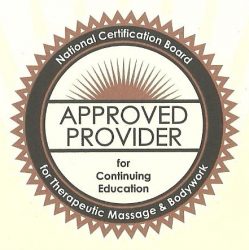For the past few years, I have been reporting on the financial health of the non-profit organizations of the massage profession. I am not an accountant or a financial expert. My information comes from Guidestar, a clearinghouse for non-profit information that is available to anyone. Non-profits may post their filings on Guidestar, and if they don’t do it, the IRS will do it for them. My annual reports do not include ABMP; they are a for-profit company that claims membership of more than 80,000 massage therapists, about 25,000 more than AMTA. Non-profits operate on a different filing schedule; the date of this filing was for the fiscal year beginning March 1, 2012 and ending February 28, 2013.
AMTA appears to be in a stronger financial position than last year’s filing, due to a huge jump of almost $1 million in their investment income. Let’s all hope that bodes well for investments in general in the US. Just two years ago, their investments had actually lost over $34K. According to the 990, AMTA actually lost 1030 members from the previous year, with the membership standing at 55,368 people as of February 2013. They are listing 79 employees, down 5 from last year. However, the organization still lists 850 volunteers, the same as last year.
Total revenues increased by over $824K. Salaries and other compensation went up by over $258K, in spite of the small reduction in employees. Overall, expenses increased by about $219K, so there was a little belt-tightening elsewhere. The bottom line, of revenue minus expenses, looks much better than last year, with an increase of over $605K.
The biggest expenditures for the organization are staff salaries, with 6 individuals listed who receive more than $100K a year in compensation. Then-Executive Director Shelly Johnson received a little over $265K. CFO Larry Laboda received over $149K, while current ED but then-Deputy ED received almost $160K. David French, listed as the Director of Marketing, was paid over $105K; Mark Tyle, Director of Chapter Relations, received over $108K, and Jocelyn Pysarchuk, listed as Director of Knowledge Transfer, received over $102K.
The 12-member Board of Directors at AMTA is also compensated in amounts ranging from $5K-6K for members-at-large to almost $40K for the President.
AMTA paid over $800K to Daniel J. Edelman, Inc, their public relations firm. That seems like a steep amount of money to me, and I wonder what they are doing that a Director of Marketing couldn’t do, or vice-versa. Outsourcing is okay, but I’d like to know the differences in what is handled in-house and what is not. That’s a question for one of my future interviews with the management. AMTA did undertake a big campaign to educate the public and raise awareness about massage this year with the traveling van and appearances all over the country. I certainly do not begrudge them spending that money; it was well-received and got a huge amount of media attention.
Other than investments, AMTA’s primary source of income is of course membership dues, which brought in over $11 million.
AMTA spent $72K on lobbyists last year, and personally, I’d like to see that figure raised in the next year. I recently called on AMTA and the other massage organizations to make a concerted effort to get the NCBTMB removed from all statutory language in the regulated states, and that’s going to require lobbying money. I suggest that they spend it in the interest of straightening out some of the mess that the massage profession is in.
Office expenses are more than $1.2 million. That’s a lot of paperclips. AMTA also spent more than $490K on travel. Hopefully, that’s economy class. Many massage therapists are struggling in our present economy. I realize we can’t hold the national convention at Motel 6, but every year I hear from dozens of people who wish they could attend, but don’t, because of the cost.
I personally have enjoyed my years with AMTA. Our state chapter (NC) is one of the larger and more active chapters, and I haven’t missed one of the national conventions in years. The fellowship and volunteer spirit and continuing education opportunities there are alive and well; I’m sorry to see the organization is losing members instead of gaining. May that turn around as much as their investment income did. It doesn’t look like this organization is in any danger of going away anytime soon.

